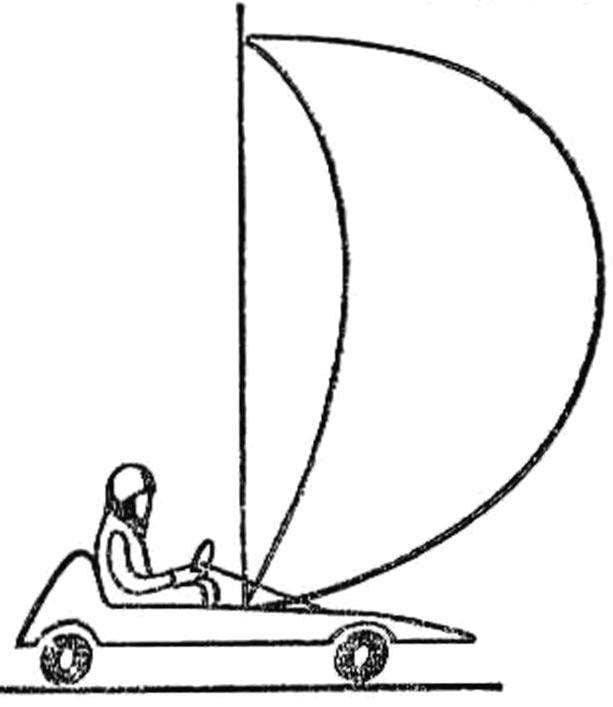 Wheeled Buer, beach sailing, sand yacht, metromobile… All these terms refer to the same Tina of vehicles using the movement force of the wind. Designs of such “petroholod” — a great many, from year to year are added up — three wheels and four, with Latin sail and with the Bermuda arms, hard planes, reminiscent of an aircraft wing, and even with a horizontally positioned fan-like impeller anemometer.
Wheeled Buer, beach sailing, sand yacht, metromobile… All these terms refer to the same Tina of vehicles using the movement force of the wind. Designs of such “petroholod” — a great many, from year to year are added up — three wheels and four, with Latin sail and with the Bermuda arms, hard planes, reminiscent of an aircraft wing, and even with a horizontally positioned fan-like impeller anemometer.
We offer to your attention a sand yacht is one of the most common schemes today — with arms Tina “devil cat” and a three-wheeled truck, the front wheel is steering. Despite its relatively small size, this kind of sailing cards can reach speeds up to 50 km/h! Do your friends a few of these “machines”, and you can make a very real race, of course, in areas where there is enough flat fields and blowing constant and strong winds. However, to ride on the sailboat can be on the school stadium, or even the lane.
The cart-based sailfish are two pine longitudinal section 40X60 mm each. The bars going through the cross-section 60X70 mm with the letter A. Additionally, the frame is supported in front of the plywood gusset plate S10 and the middle and rear parts of the two strips of the same plywood with a width of 150 km. All the elements of the frame are joined with epoxy glue and bolts M6.

